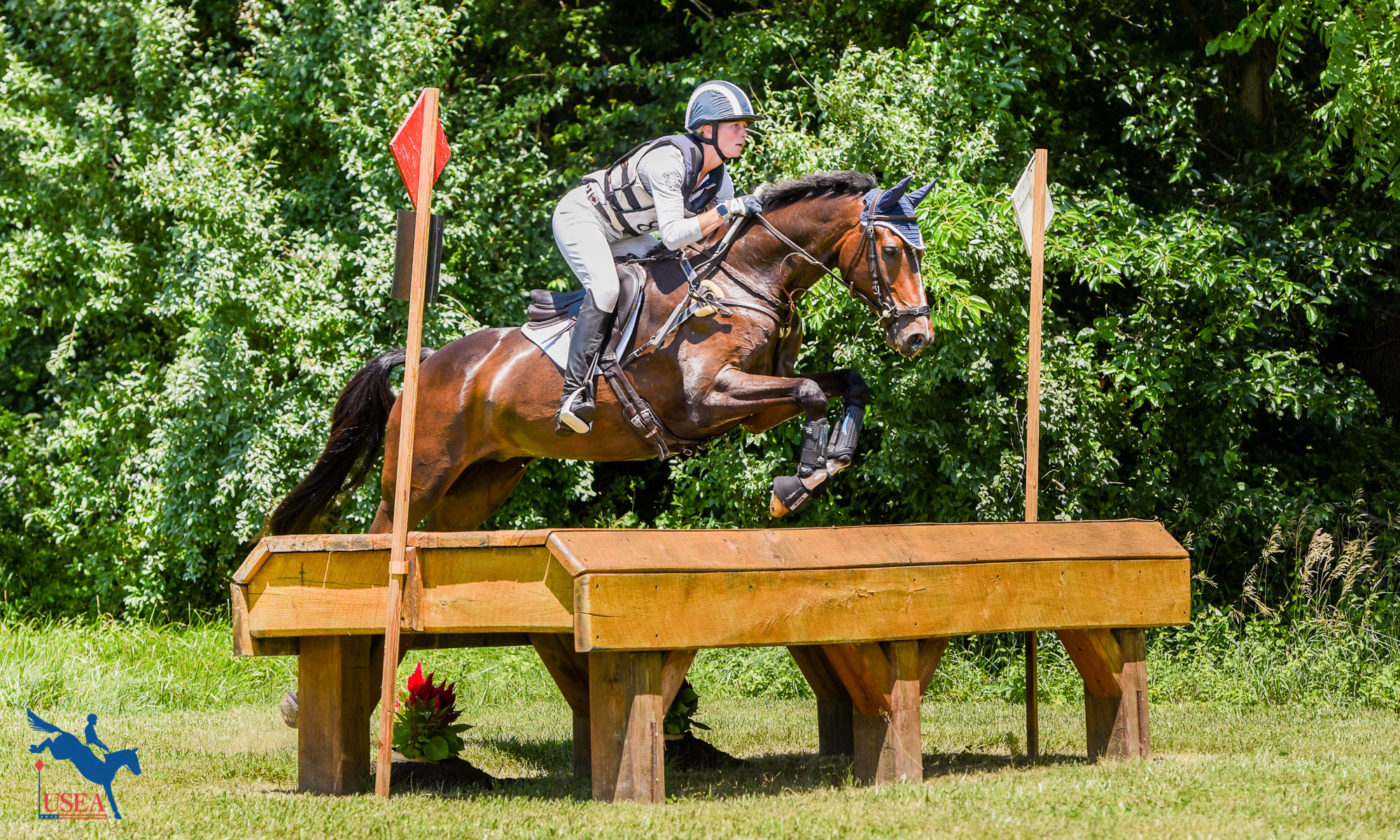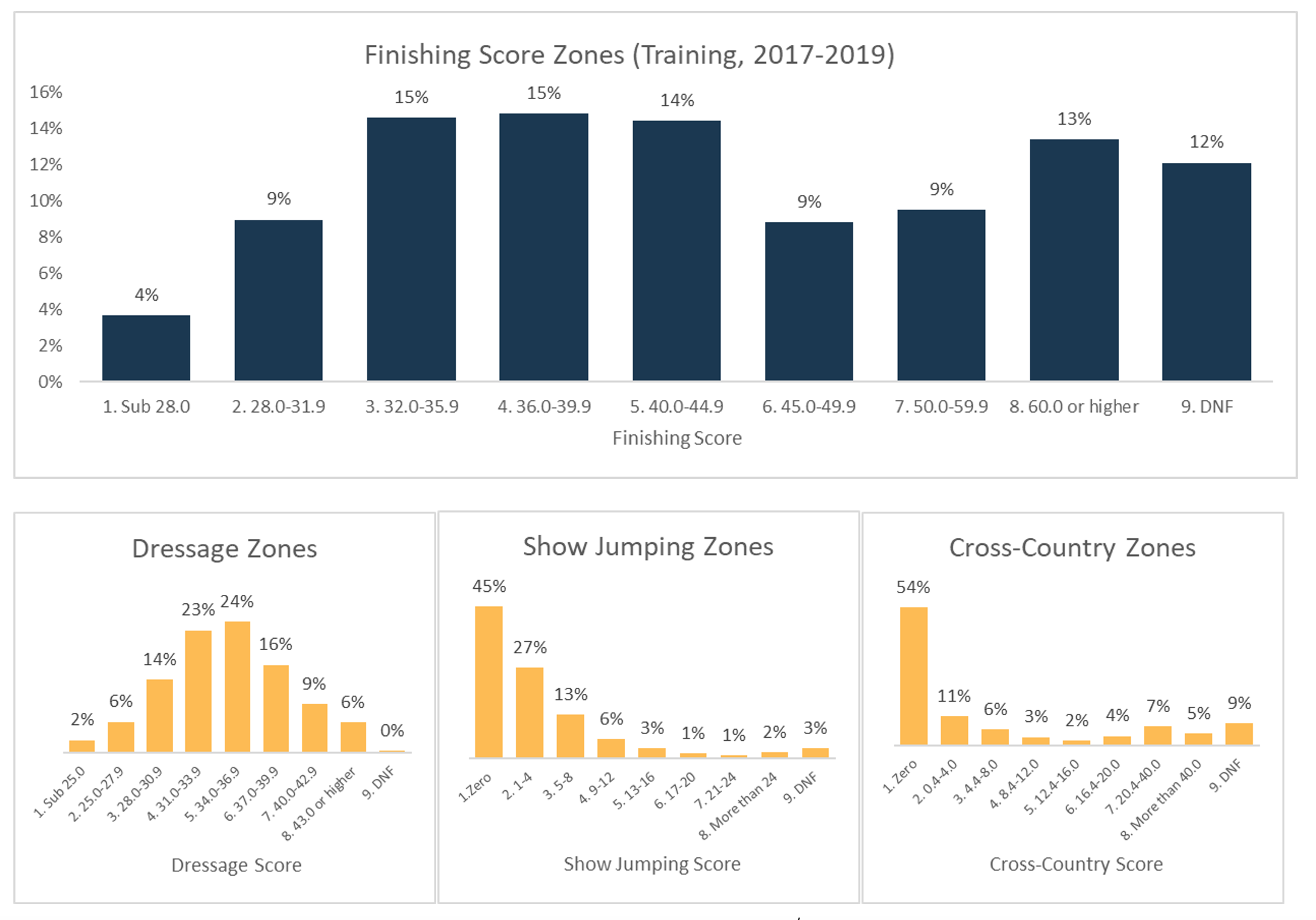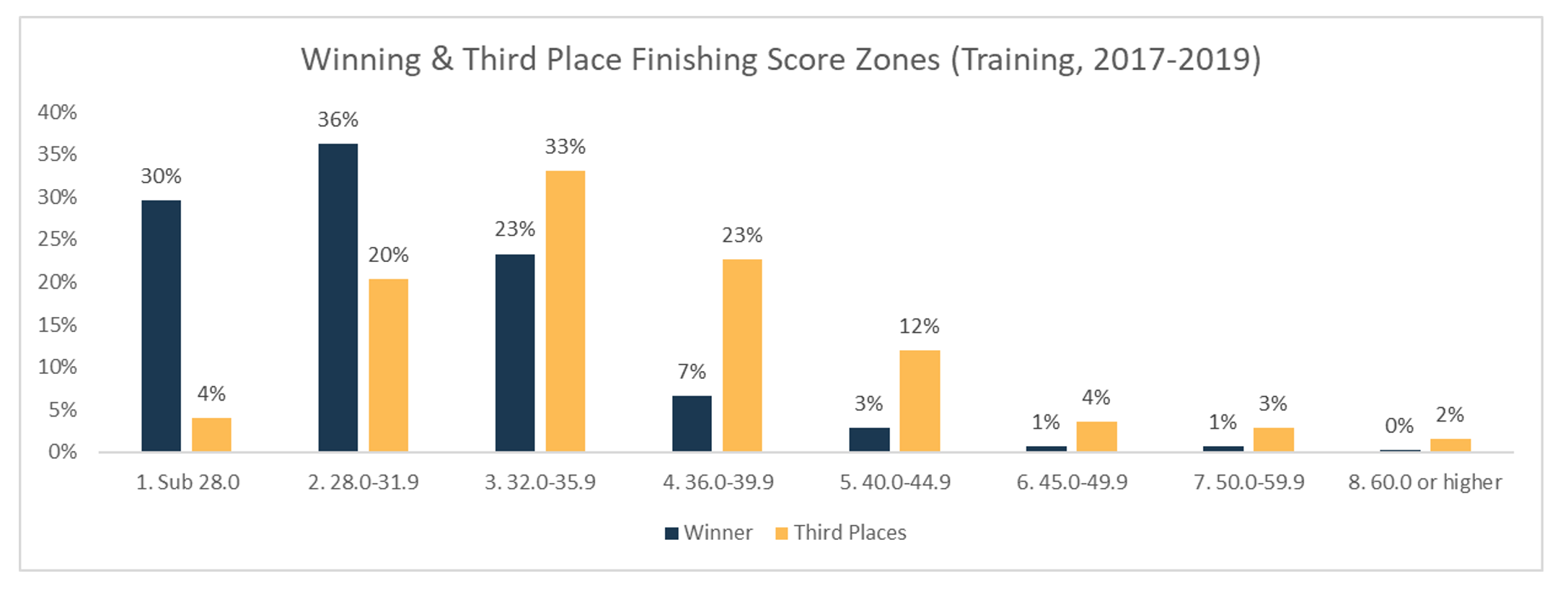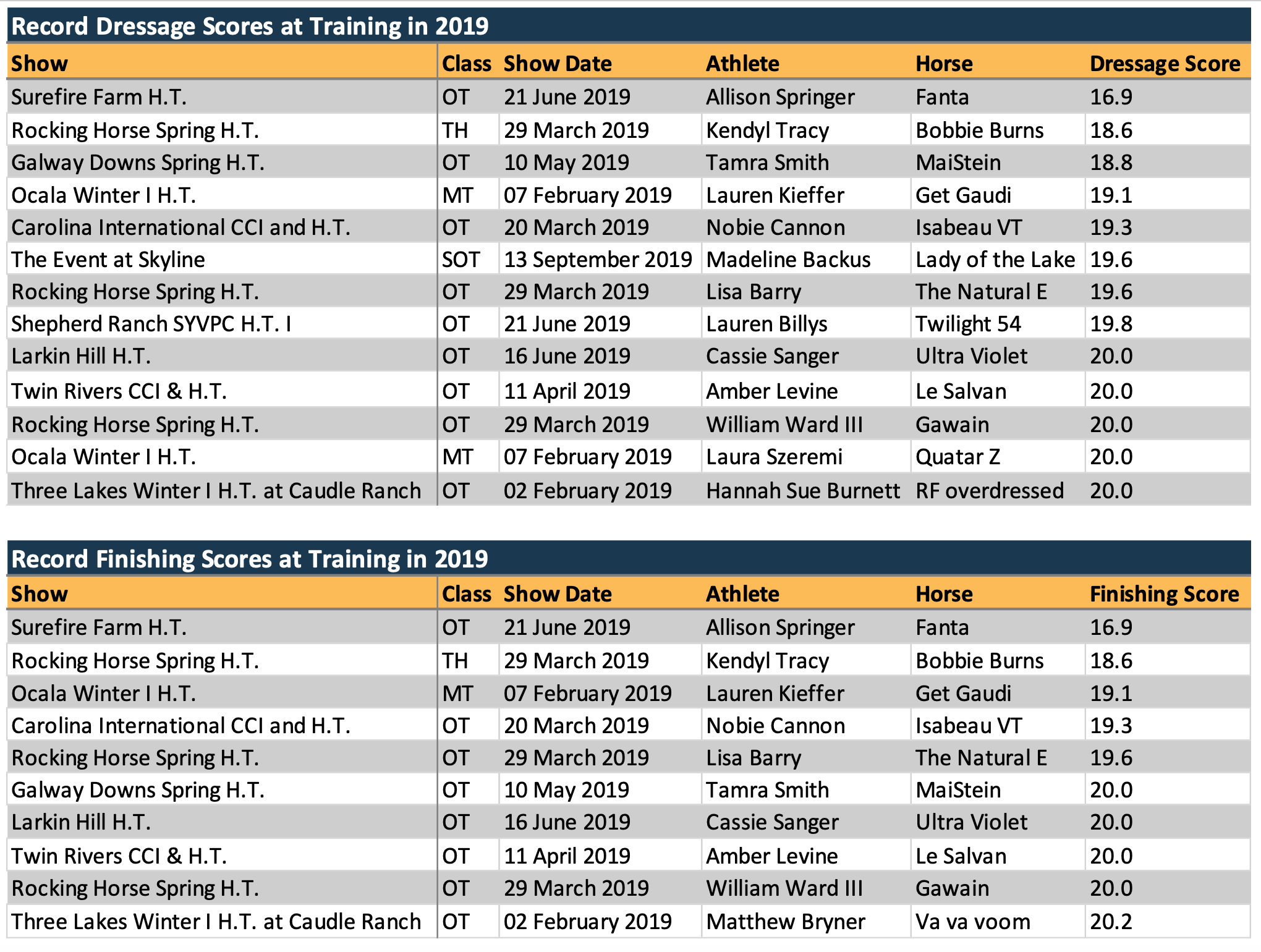Renew Your USEA Membership for the 2023 Season Today LEARN MORE

How competitive have your Training results been? What’s a good dressage score? What scores could earn you a top finish? We’ve been taking a look at each USEA level and as we continue this series, EquiRatings offers some stats and graphs to help evaluate your Training game.
These graphs show Training performance across the board, from sub-28 to DNF (Did Not Finish). Take a look to see what scores the Training crowd has been earning. What scores do you usually get? We give you some of our takeaways to get you started.

Finishing Score Zones
Per-Phase Zones
Eventing is about putting all three phases together to finish strong, but what is a strong Training level finish? The graphs and tables below show you what it takes to win.

|
Final Position |
Average Dressage Score |
Started as Dressage Leader |
Started 10 Marks or Less from Dressage Leader |
Started More Than 10 Marks from Dressage Leader |
|
Winner |
29.3 |
48.9% |
50.0% |
1.1% |
|
Third Place |
33.0 |
6.1% |
82.1% |
11.8% |
Using 2017-2019 Training data.
|
Final Position |
0 Show Jumping Penalties |
1 to 4 Show Jumping Penalties |
5 or More Show Jumping Penalties |
|
Winner |
81.9% |
15.0% |
3.1% |
|
Third Place |
63.5% |
26.1% |
10.4% |
Using 2017 – 2019 Training data. This table includes show jumping time penalties and jumping penalties.
|
Final Position |
Clear Inside the Time |
Average Cross-Country Time Penalties |
|
Winner |
88% |
0.4 |
|
Third Place |
75% |
1.1 |
Using 2017 – 2019 Training data. Clear Inside the Time includes all runs that were clear jumping with no time penalties (whether for going over the optimum time or for going too far under the time).
Lastly, we have pulled the 2019 record dressage scores and record finishing scores from Training level. There are some recognizable names on these lists but also some combinations who may not always make the eventing headlines.

Now that you know how your Training peers are performing, what are some goals you can set? Do you want to improve toward the middle of the pack or aim for a top finish? Either goal is great. Progress is progress. Of course, long-term goal-setting is not about comparison - you have to stay in your lane or risk being robbed of joy. If your main aim is to enjoy your horse with a few outings a year, these numbers can just be fun! But, if you want to be competitive, now you know what it takes. Either way, enjoy the journey.